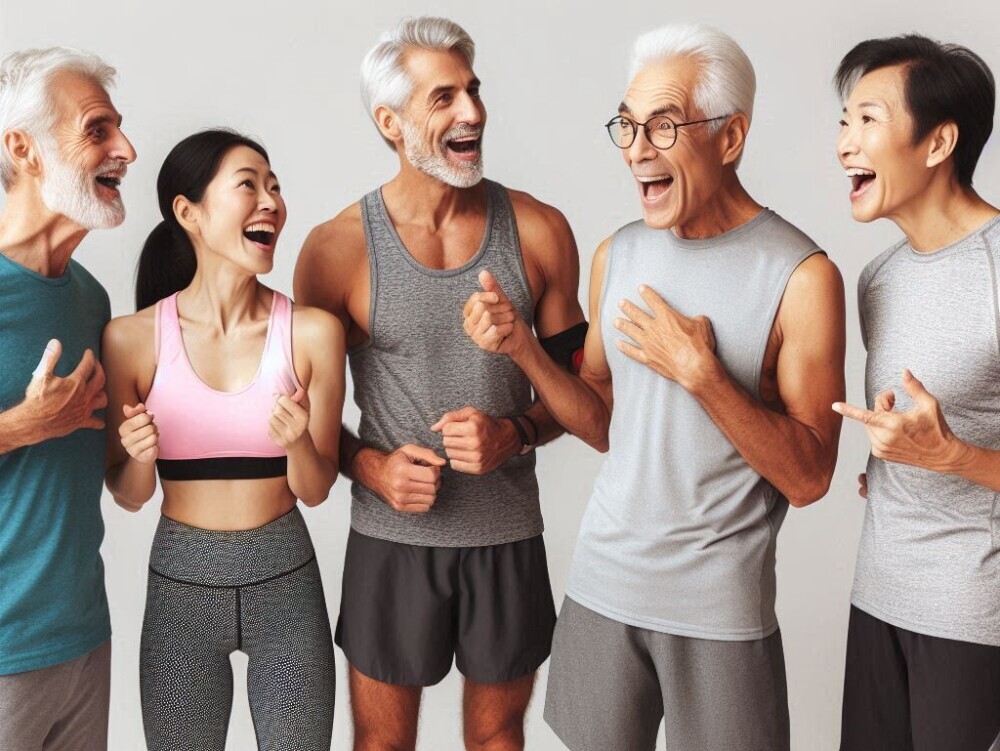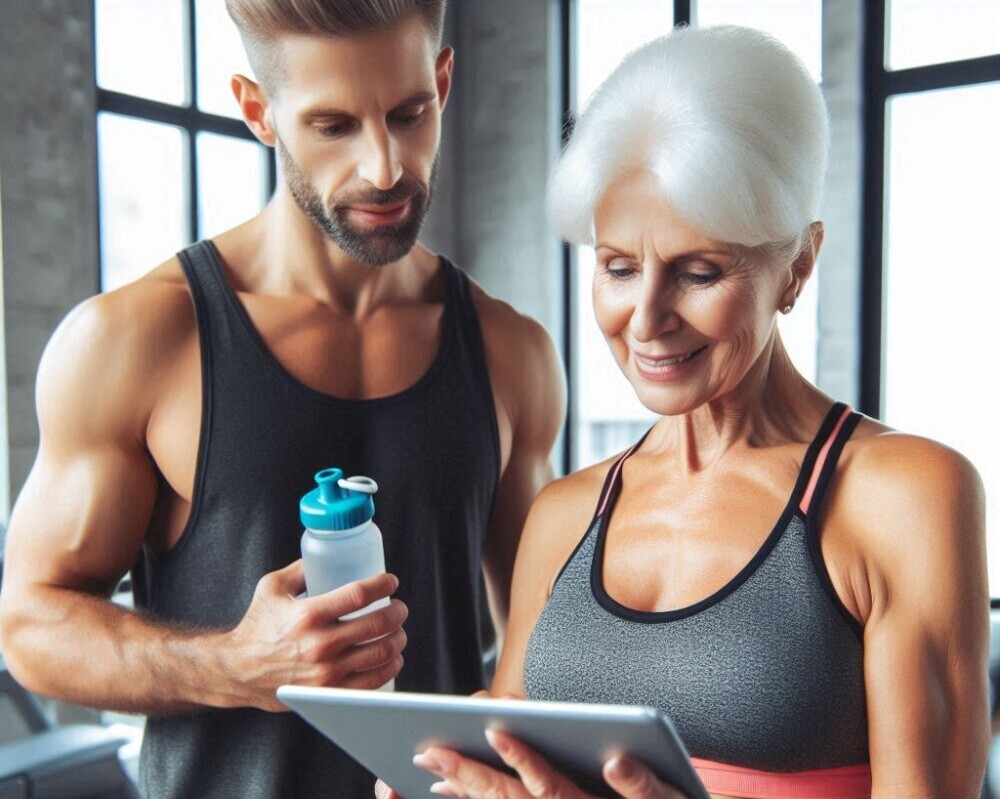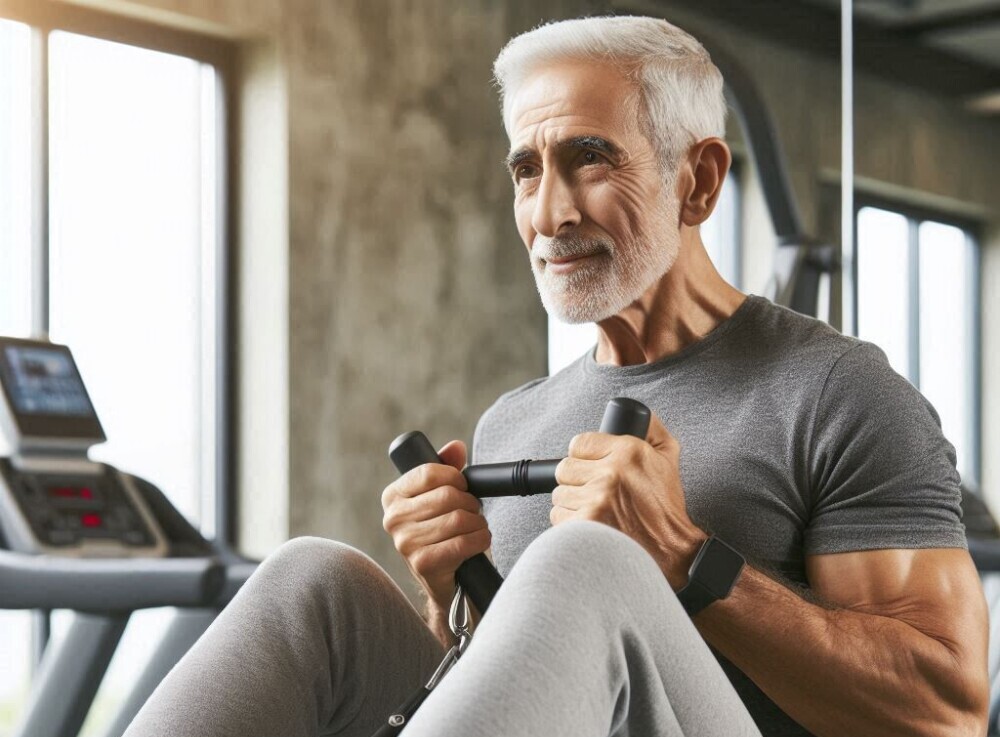 As we age, moving and shaking becomes more than just optional—it’s essential! Physical fitness is like that loyal friend that’s always there, helping you maintain wellness and vitality. Sure, the body’s going through changes, but it thrives on movement. It’s all about finding ways to keep those muscles agile and that heart pumping.
As we age, moving and shaking becomes more than just optional—it’s essential! Physical fitness is like that loyal friend that’s always there, helping you maintain wellness and vitality. Sure, the body’s going through changes, but it thrives on movement. It’s all about finding ways to keep those muscles agile and that heart pumping.
Engaging in regular physical activity does wonders, far beyond just keeping you strong and flexible. Staying active sharpens your mind, boosts your mood, and keeps independence within reach. Who doesn’t want to enjoy a good walk in the park or some gardening without worrying about balance and strength?
Then there’s the quality-of-life factor. Studies have shown seniors who keep moving tend to live healthier and, often, longer lives. Fitness programs for seniors offer exercise that improves things like balance and flexibility, reducing the risk of falls, injuries, and those nuisances we’d all prefer to avoid.
The brilliant part is that physical exercise isn’t just about the body—your mental and emotional well-being gets a boost too. It’s kind of like a natural happiness kick! So, incorporating some form of exercise into your routine is a win-win. Put on those walking shoes or grab those light weights; your future self will thank you.
Exploring Accessible Exercise Programs and Equipment for Seniors
Finding the right exercise routine can be a game-changer, especially when it’s easy on the joints but still gets you moving. Think chair fitness for seniors – chair yoga or tai chi—perfect for building strength and improving balance without overexertion. It’s all about finding the right fit for where you’re at, capability-wise.
Community programs are fantastic because they offer both accessibility and affordability, opening doors to group classes which are often free or low-cost. Whether it’s community centers or local gyms, there’s usually something happening nearby that’s senior-friendly. Plus, exercising with others can be a big motivation boost.
Investing in a few pieces of equipment like resistance bands, light weights, or even a stability ball can turn any space into a personal fitness spot. As fitness equipment for seniors, these tools are excellent for versatility and can help target various muscle groups, ensuring a balanced workout.
Technology has got your back too. Plenty of apps out there guide you through exercises, track your progress, and even connect you with virtual coaches. It’s a modern twist that can make working out both fun and systematic, all from the comfort of home.
Wise Aging: Setting Realistic Fitness Goals and the Role of Health Supplements

Achieving those wellness dreams starts with setting goals that are both achievable and sustainable. The key here is to tailor these goals to fit your lifestyle, interests, and current health status. It’s like crafting a personal roadmap for your fitness journey. Each milestone celebrated boosts motivation and confidence.
Getting a health professional involved in your fitness planning can make a huge difference. A personal fitness trainer for seniors can help assess your current fitness levels and recommend a suitable exercise regimen. Building a routine that respects the body’s limits and slowly raises the bar is crucial for long-term success.
Remember that fitness isn’t one-size-fits-all. Maybe it’s focusing more on improving balance or perhaps enhancing endurance. Whatever fits your lifestyle and goals, it’s important to adapt and modify routines as you progress.
And about those health supplements—while they can be great for complementing your fitness routine, it’s vital to choose wisely. Always get advice from a healthcare provider before adding any new supplement to your regimen. Some help with joint health, others boost energy, but they should support your hard work, not replace it.
Embracing an Ongoing Commitment to Wellness
Fitness is more than just an activity; it’s a way of life. Making small, consistent changes is really where the magic happens. For us seniors, maybe it’s a daily walk or swapping a snack for a healthier option. These little commitments stack up over time and can lead to lasting fitness adventures.
Social connections turn workouts from chore into choice. Joining in group exercises or community activities not only boosts motivation but also makes fitness fun and social. It may be that you’re now living in a retirement village. Check and see if there are like-minded folks there who are already participating in group fitness exercises, or who–like you–would like to be doing so! It’s all about building friendships and a supportive network to keep things exciting and engaging.
Total wellness isn’t just exercise—it’s embedding balance into various aspects of life. We’re talking mindfulness practices for mental peace, nutritious food to fuel all that movement, and sleep to recharge your batteries. Weave these elements into your daily routine and watch how it elevates your fitness experience.
Crafting a long-term strategy includes recognizing your achievements and adjusting plans according to how your body feels. Seasonal changes, health conditions, and personal preferences shift, and that’s perfectly fine. The trick is to listen to your body and continue thriving in whatever way feels right.

Affiliate Disclosure
Here’s a little transparency: Our website contains affiliate links. This means if you click and make a purchase, we may receive a small commission. Don’t worry, there’s no extra cost to you. It’s a simple way you can support our mission to bring you quality affiliate marketing content.

Aging wisely through fitness and wellness is such an important topic, and this article does a great job of highlighting the benefits of staying active as we get older. Prioritizing movement, strength, and balance can significantly improve quality of life and independence. It’s inspiring to see a focus on safe and effective exercises that cater to different ability levels.
Wellness isn’t just about physical fitness—it’s also about mental and emotional well-being, and incorporating mindfulness and social activities makes a huge difference. This is a great reminder that staying active is possible at any age with the right approach and mindset!✨
Yes, Robbie, there’s not really any substitute for doing the best job we can to maintain both fitness and wellness as we get older. Could be that it’s getting a little bit late if we suddenly come to the point of realising things might have been much better if we’d taken intentional action and started looking after our wellbeing earlier. Thank you for your comment!
I’m 40 and that’s the age where we start thinking of aging gracefully. I’ve always thought that I will age like fine wine, but it’s lots of work! You must prioritize self-care, and be extremely attentive to your physical and emotional well being. Also, you must take care of yourself and exercise regularly, even if it’s just walking in your neighborhood! For me, I’ll start walking again starting Thursday!
Thanks for your comment, angel…, it’s a thoughtful and sensitive reflection. Hope you settle in quickly to your new walking program!
This is a helpful overview of fitness and wellness for seniors! It’s great that the article emphasizes accessible exercises like chair yoga and the importance of setting realistic goals. I’m curious, what are some of the biggest challenges seniors face when trying to start or maintain a fitness routine, and how can these be overcome?
The article also touches on community programs. How significant is the social aspect of these programs in contributing to overall well-being, beyond just the physical benefits? It seems like these connections could be a major factor in adherence and enjoyment. Are there any specific types of community programs that have proven particularly effective in fostering both physical and social wellness among seniors? Also, the article mentions health supplements. Given the wide range of opinions and products available, what are some key questions seniors should ask their doctors before considering any supplements as part of their wellness plan?
Thanks for your observations, Slavisa.
One big challenge seniors face with fitness is staying motivated, especially with pain, mobility issues, or fear of injury. Starting slow with low-impact activities like walking, swimming, or chair yoga does help. The social side of community programs—like SilverSneakers or local senior center classes—helps keep exercise fun and, as a bonus, helps fights loneliness.
Beyond fitness, the programs boost mood and mental well-being. Before taking supplements, seniors should ask their doctors: Is this safe with my medications?, Do I really need it?, What dosage is right for me?, and Are there any side effects? You’re exactly right, because of the myriad of products and opinions out there, staying active and informed can make all the difference!
This is such an important topic! Staying active as we age truly is a game-changer for both physical and mental well-being. I love how you highlight different exercise options that cater to various mobility levels, like chair yoga and tai chi. Have you come across any particularly effective community programs that make fitness more accessible for seniors? Also, what are your thoughts on balancing physical activity with proper recovery and joint care? Looking forward to hearing more insights!
Thanks, Herman. Most communities have senior center exercise groups or local YMCA classes. Going to either of those you’d be getting in some basic exercise for seniors, plus you’d get the chance of a good dose of companionship with likeminded others into the bargain! Apart from chair yoga and tai chi, a great low impact activity for both seniors’ recovery and joint care is water aerobics. To find a great seniors’ exercise program, a good starting point for you might be to check out a short YouTube video on what’s available in the popular and successful SilverSneakers range of exercises for older adults. It’s called SilverSneakers On-Demand Video Workouts Are Here!
Great insights here, Nigel. I’m in my 40s and already feel like I need to be reading up on senior fitness! Totally get the community aspect. I realized how out of shape I was when I struggled to get through an hour in a puppy training class—though I did push through!
I walk a lot and have a kettlebell that really needs more attention. Also got some ropes, but turns out I can’t skip (d’oh!).
For someone getting plenty of cardio but little strength training, what do you reckon is a decent starting point? Two 10-minute sessions a week, or go for a longer half-hour session more often?
Hi Robert. Thanks for your observations. Since you’re getting lots of cardio but not so much in the strength training area, a great starting point would be just a couple of short sessions a week, as you’re suggesting. Try bodyweight exercises like push-ups, squats, or planks. You could start with two 10-minute sessions of this, but for better results go for your half-hour session option—only make it twice a week, not once. Three times a week would be even better if you want to see good results.